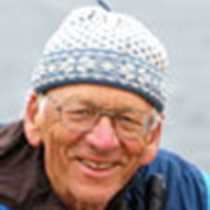Southwestern Ireland
A variety of visions and thoughts arise when the word Ireland is spoken. For some people, it is 40 shades of green; for some, Celtic culture and its history; for some their personal ancestry; for some St Patrick’s Day and cheerful folk songs; for some a pint of Guinness or a smooth Irish coffee. For us it was our first day of our planned time in this western part of the British Isles.
The morning started early near the south westernmost islands of the Skelligs. These are extremely remote and difficult to experience islands. Nothing protects these rugged two islands from the open North Atlantic to the west and north. Fierce storms or thick fog often surrounds the islands. However, they are extremely interesting because of the birdlife that occupies the islands during the summer breeding season and because of the remains of human habitation discovered on the highest reaches of Skellig Michael, the largest of the two islands.
Little Skellig is one of the most important breeding sites of Northern Gannet. Gannets are the only member of the booby seabird family which occurs so far north. These large, mostly white birds with black wingtips and gold shading around the head and neck feed by plunging from an altitude above the surface of the water swiftly through the water to catch a fish. A few birds were feeding as we approached Little Skellig but more birds were seen with long stringers of kelp and other materials in their bills for the nest building activities. Gannet nests are clumped along narrow ledges and small flat benches, so tightly in places that an estimated 30,000 pairs coat the island.
Having circled much of Little Skellig, the Captain set course to slowly pass the eastern side of Skelling Michael. A small road slices along the cliffs of the eastern side of the island to a couple of lighthouses built in the 1920’s. But of greater interest were a couple of faint crude stairway paths leading up and up to the very top ridge of the island. Here Irish monks maintained beehive huts and other rock structures, creating a monastery and hermitage. For centuries monks chose to spend their lives isolated in study, contemplation, and worship on this spectacular speck of an island. Many of us wondered what life would be like for these men of worship removed from the rest of the world.
Just before lunch we cruised past the end of Great Blasket Island where another group of Irish once lived but had decided to leave to live on the mainland. Life on the Blasket Islands became too difficult and challenging for the residents so they went to the mainland where it was more convenient to survive the harsh and sometimes difficult conditions of western Ireland.
Our afternoon was spent in the partially sunny countryside of the Dingle Peninsula. Most of us drove around the peninsula past the headland called Slea Head where some of the shades of green were bathed in sun as well as the sandy strands at the heads of the small bays indenting the coastline. We stopped at the historic site of the Kilkakader church. Although the church structure itself is no longer used, the well-built stone walls still stand after hundreds of years and then nearby cemetery is still the final resting place for modern local residents.
For the remaining part of the afternoon people gathered in the South Pole Pub owned at one time by the famous polar explorer Tom Crean. For those of us who had traveled to Antarctica, it was a very meaningful homage to this particular pub to raise a toast to this great explorer where he lived his final years. Others in our group gathered in Murphy’s Pub along the main street of Dingle. Pubs are not just places to drink but are an important part of the Irish culture, a place of gathering and joyful entertainment. We finished this first day’s activities listening to a local Irish band and enjoying the first refreshing Irish drink that was like “velvet on the pallet.”




